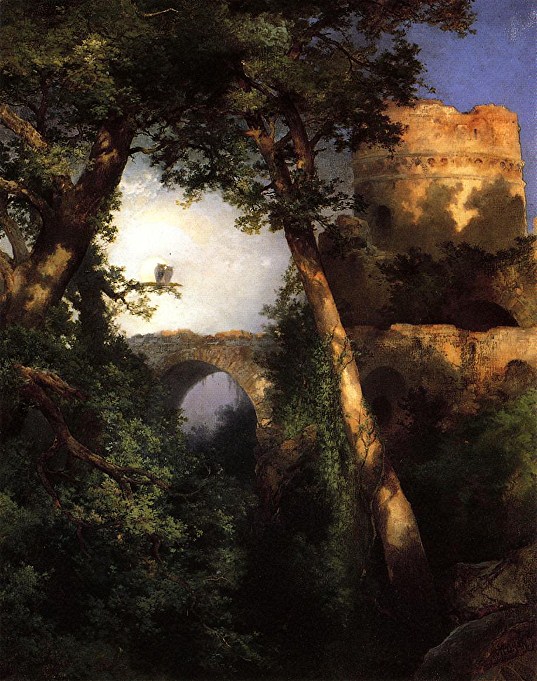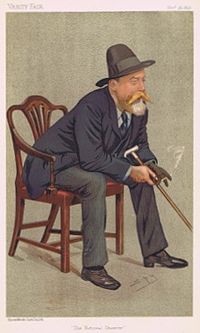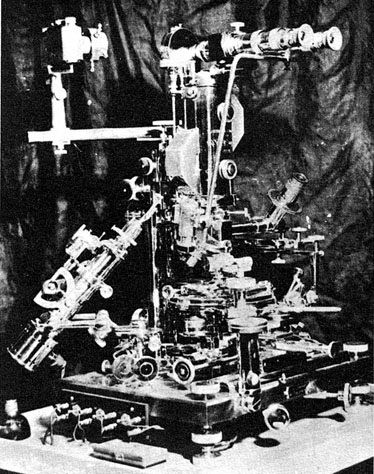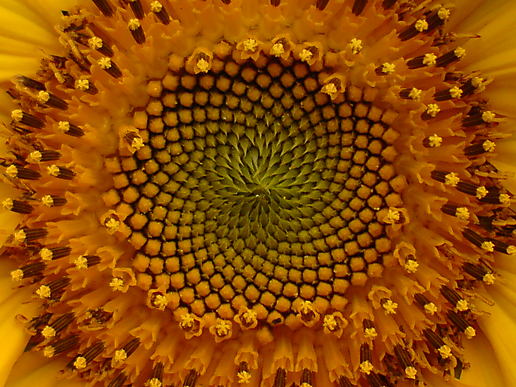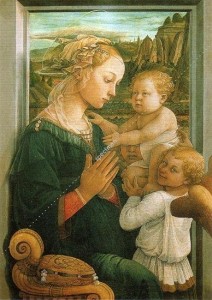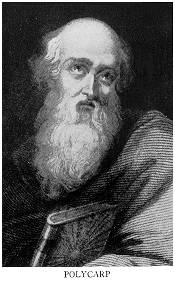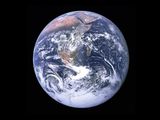INTELLIGENT DESIGN
by CW
Few of us have not, at least once in our lives, viewed a night sky scattered with myriads of scintillating stars without sensing the work of a Creator, as Psalm 19 expresses it: “The heavens declare the glory of God, and the firmament showeth His handiwork.” As English Jesuit poet Gerard Manley Hopkins writes: “The world is charged with the glory of God”
http://www.poetryfoundation.org/poem/173660).
That’s the large demonstration, the macrocosmic view, through the tele(macro)scope.
How about viewing creation through the microscope? What we see is no less awe-inspiring. Indeed we are given, if possible, an even more impressive demonstration of grand design by a supremely intelligent Designer, because we now see structures that mediate life itself.
Recently, and gradually, I have been exposed to and developed an increasing interest in what has been described by its formulators and proponents as “Intelligent Design.”
The concept has arisen from the scientific observations of microbiologists, geneticists, and, based on their empirical data and postulates, the theoretical proposals of mathematicians, statisticians, physicists, and cosmologists making the case for Intelligent Design.
A gathering body of scientific detail and inference is reaching what for some constitutes a critical mass of evidence that inevitably points not only to the rationality of the universe, but to the existence of a Creator, the source for cosmobiogenesis and life’s stupifyingly intricate and ineffably elegant form and function.
Of course, those already disposed to believe in the existence of a Creator, irrespective of what “science” has to tell them, are yet, many of them, still gratified by the findings of the Intelligent Design movement, which is now seriously challenging what has been the virtual stranglehold of Darwinian evolution taught in our schools and universities—purporting to be science but no less faith-based than creationism.
The heart of this debate, where the Darwinian theory of blind chance and random mutation most egregiously shows its weakness, is in the structure and function of DNA, the informational molecule in each of the human body’s 100 trillion cells, whose length when unfolded is six feet long. If you stretched the DNA in all the body’s cells, end to end, they would extend over 744 million miles, or cover the distance from earth to the moon about 1500 times!

DNA, as you undoubtedly know, encodes genetic instructions of all known living organisms—including single-celled bacteria and many viruses. Its four nitrogenous base pairs (adenine and guanine—called purines—and cytosine and thymine—called pryrimidines—constitute the four living letters of the bioanthropic alphabet. The human genome has three billion base pairs!
It is estimated that there are about 20,000 genes in the human genome, a gene being a molecular unit of heredity consisting of stretches of DNA and RNA that code for a function in the organism.
DNA’s double-stranded helix consists of two long polymers of linked nucleotides, whose “backbone” is composed of alternating sugars (deoxyribose) and phosphate groups, where the nucleobases are the “steps” linked to the sugars on either side.
It is the sequence of the four nucleobases—the amino acids Guanine, Adenine, Thymine, and Cytosine—that encodes the information. The enzyme helicase, a motor protein, moves directionally along a nucleic acid backbone, separating the two annealed nucleic acid strands. It spins the DNA molecule as fast as a jet engine as it unwinds the double helix into two strands. The enzyme RNA polymerase does the copying from the DNA template and produces a RNA strand.
The DNA molecule can be circular or linear and is composed of between 100,000 to over 3 3/4 billion nucleotides—a prodigious feat of nanoarchitecture since it is braided and folded several times in precise and compact ways to form a working and replicable unit.
Intelligent Design proponents call attention to the function of ribosomes, which translate the genetic information in a strand of RNA into a string of amino acids that will become a protein. Transfer molecules transport amino acids to the ribosome, each amino acid having its own transfer molecule with a 3-letter code which is matched with the RNA in the ribosome. 100 trillion molecules of hemoglobin are made by the ribosomes in our cells every second! As well as all the other body proteins.
 Twenty amino acids produce over 30,000 different cellular proteins, but their correct assembly in forming functional proteins cannot take place without the instructions provided by the DNA molecule, which must antedate it and is far more complex than any protein. Thus, we confront the problem of the origin of genetic information. What is its source? A living cell is capable of reproducing itself, which requires that it have DNA to encode its structure and function. No DNA, no self-replication. Without self-replication there is no (Darwinian) natural selection. So you can’t use natural selection to explain the origin of DNA. (See http://www.youtube.com/watch?v=CmB4uLANCBo for an explanation of this conundrum.)
Twenty amino acids produce over 30,000 different cellular proteins, but their correct assembly in forming functional proteins cannot take place without the instructions provided by the DNA molecule, which must antedate it and is far more complex than any protein. Thus, we confront the problem of the origin of genetic information. What is its source? A living cell is capable of reproducing itself, which requires that it have DNA to encode its structure and function. No DNA, no self-replication. Without self-replication there is no (Darwinian) natural selection. So you can’t use natural selection to explain the origin of DNA. (See http://www.youtube.com/watch?v=CmB4uLANCBo for an explanation of this conundrum.)
Concurrence of the two requirements for the inference of intelligent design, specificity and improbability, indicate the hand of an intelligent agent. The small probability of an event or structure occurring by chance and the precise specification are the prerequisites for information. Only an intelligent agent can make information.
Though single-celled life began 3.8 billion years ago, nothing advanced beyond that point for three billion years, whereupon, .8 billion years ago, all 34 animal phyla suddenly appeared simultaneously, referred to as the Cambrian explosion, with no apparent antecedents or transitional forms. What gives?
Chemist (Ph.D.) and chess master Jonathan Sarfati has mathematically demonstrated that the random creation of even one living protein is so statistically improbable as to be realistically impossible; or, based on the product of the number of atoms in the universe, the number of atomic interactions per second, the number of seconds elapsed in the universe, according to the (fallacious) “big bang” theory (15 billion years), one arrives at the number of ten to the 110th power interactions possible. The total number of possible interactions of atoms from “big bang” to present is the product of the 20 amino acid letters x 256 enzymes required for the simplest life x 10 conserved amino acids on average, giving the incomprehensible number of 10 to the power of 3330 to get the right sequence for life. (See http://www.youtube.com/watch?v=Sh048UW2Tj4 for Sarfati’s presentation.)
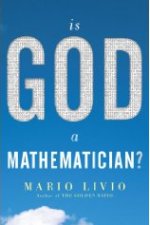 Yet greater improbability of life’s origin by random chance is given in this video:
Yet greater improbability of life’s origin by random chance is given in this video:
http://www.youtube.com/watch?v=YinrToIKJtg
No evolutionist has ever demonstrated how life can come from nonliving matter. A living substance is so constituted by its ability to reproduce itself.
A good general introduction to the theory of Intelligent Design is found here:
http://www.youtube.com/watch?v=azMgKrkJ5lA
Here’s another short version of what is happening inside the cell, with emphasis on the programmed aspect of the cell’s and its organelles’ functions, prepared by the Discovery Institute, whose members propound the Intelligent Design theory: http://www.youtube.com/watch?v=1fiJupfbSpg
Another presentation, http://www.youtube.com/watch?v=YO7gV41PNcA , gives a survey of the notable figures in the intelligent Design movement, including Stephen Meyer (Ph.D. in history and philosophy of science from Cambridge, author of Signature in the Cell: DNA and the Evidence for Intelligent Design); William Demski (Ph.D.s in both mathematics and philosophy and author of many books, most recently Intelligent Design Uncensored); Phillip Johnson ( UC Berkeley law professor and author of, among other books, Darwin on Trial); Michael Behe, biochemist with post-doctoral work on DNA at NIH and author of Darwin’s Black Box,which formulates his views on irreducible complexity; and Michael Denton, English geneticist and biochemist, whose 1985 book Evolution: A Theory in Crisis, presents a systematic critique of neo-darwinism. (Technically, Denton is not a professed member of the ID movement, but has strongly influenced its proponents.)
The video “Genetic Entropy and the Mystery of the Genome” http://www.youtube.com/watch?v=pJ-4umGkgos, featuring an interview of the geneticist Dr. John Sanford, convincingly establishes that creation is a “top-down” process, that the information-dense system that is the human genome is surpassingly sophisticated (sophia, Gr. wise), and that the human genome represents data compression at an exquisite, thought-defying level.
Darwinian evolutionists set great store by the concept of mutation: that’s how changes come about—slight modification of the cell and its host over time. But virtually all cell mutations are deleterious; that is, they degrade, vitiate, and lose the genetic information of the cell, so that, rather than improving the functionality of the cell and its host, the mutation impairs and weakens that cell, absent some rectifying mechanism, some overriding counter influence. Sanford contends
http://www.youtube.com/watch?v=K8KbM-xkfVk that genetic entropy characterizes all cellular and biological life and that DNA mutation is leading to eventual genomic destruction: a disturbing prognosis for nontheists. “Personal genetic entropy”, says Sanford, “is an incontestable fact that no scientist on the planet can deny, because it is why we die.” “Every gene of every cell in my body is mutated, and so that guarantees my aging and my death.” But beyond that, eventual death of the species is implied; that is, the physical body the human spirit uses to gain experience and consciousness on the physical plane.
A central concept in the theory of intelligent design is the notion of “irreducible complexity”. Coined by biochemist Michael Behe, an irreducibly complex system is one “composed of several well-matched, interacting parts that contribute to the basic function, wherein the removal of any one of the parts causes the system to effectively cease functioning.” All components of the complex system must be present simultaneously and in the right configuration to enable it to properly function. “Supporters of intelligent design argue that anything less than the complete form of such a system or organ would not work at all, or would in fact be a detriment to the organism, and would therefore never survive the process of natural selection” (Wikipedia).

From a confessedly theistic perspective but still rightly registering the magnitude of wonder and intelligence implicit in human DNA and cell life, this short video is persuasive:
http://www.youtube.com/watch?v=CBeCxKzYiIA
Perhaps nowhere else has the presence of intelligent design been shown more clearly (other than in DNA itself) than in the astonishing biomachine of the bacterial flagellum, as show by computer animation and described by Michael Behe. This video supports the assertion: http://www.youtube.com/watch?v=Ey7Emmddf7Y
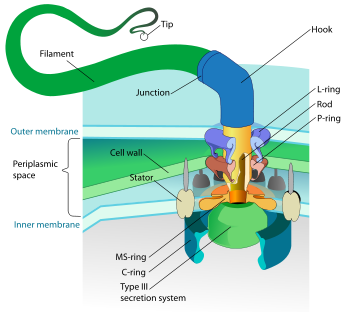
Harvard biophysicist Howard Berg maintains that the bacterial flagellum is “the most efficient machine in the universe.” How so? Consider a few of its features:
It self-assembles and self-repairs
It has a water-cooled rotary engine
It is driven by a proton motive force
It has two gears: forward and reverse
It operates at between 6,000 and 17,000 rpm (some flagella can spin at 100,000 rpm) and can reverse direction within 1/4 turn, which change in rotation is brought about in response to chemical stimuli from the cell’s ambiance. These chemical signals are detected by a two-component signal transduction circuit that operates to induce the switch in flagellar rotation. (See
http://www.uncommondescent.com/intelligent-design/the-bacterial-flagellum-truly-an-engineering-marvel/ for a detailed description of the flagellum structure and operation.)
Sensory receptors (proprioceptors) on the flagellum nodule relay information about proximate food resources and directional prospects.
The bacterial flagellum is irreducibly complex. Darwinian gradualism does not apply: all components must be simultaneously present (coded by 50 genes).
Geneticist and microbiologist Scott Minnich has worked with bacterial flagellum for ten years and gives an informative, even inspiring presentation of its form and function in this lecture, “A Paradigm for Design”: http://www.youtube.com/watch?v=0NXElnMuTPI
For the sheer beauty and precision of intercellular life, even when vastly simplified for viewing purposes, this video is awe-inspiring. We marvel that what we see is happening. More marvelous yet is how it is happening, by what supreme finesse and intelligence the intricate and delicate processes are orchestrated and integrated, in a medium and ecosystem far more complex than the splendid animation details: http://www.youtube.com/watch?v=yKW4F0Nu-UY. The soundtrack on this video adds to the impact. Should you desire the same visuals, but with a scientific description, try this Harvard Cell Animation equivalent:
http://www.youtube.com/watch?v=GigxU1UXZXo The explanations of what we are seeing give us more understanding, though perhaps somewhat reducing the sheer wonder elicited by solely viewing the aspect and action undiverted by the effort at comprehension.
What’s the crux of the Intelligent Design movement? The proposition that life shows the handiwork of a Master Designer, of an incalculable Intelligence. It reveals the presence of Mind.
Many theoretical physicists have come (are coming) to the same conclusion:
Awarded the Nobel prize “for the creation of quantum mechanics”, physicist Werner Heisenberg maintained that according to quantum theory the smallest units of matter are not physical objects (subatomic particles) but ideas.
Winning the Nobel prize one year after Heisenberg, Erwin Schrodinger stated that “we are outside material creation (spectators) of which only our physical bodies are a part.” It was his contention that humans are “condensed light beams.” Polymath and clairvoyant researcher Rudolf Steiner, originator of a body of teachings called Anthroposophy (which are a modern form of Rosicrucianism), founder of the Waldorf schools and biodynamic gardening, among other things, calls physical matter “shattered” or degraded spirit.
Nobel prize-winner George Wald, physiologist and biologist, asserted that chance and random combinations could not have produce advanced life. The origin of consciousness in humans and the origin of life from non-living matter are congruent when based on the assumption that mind is the source and condition of physical reality. The stuff of physical reality, Wald maintained, is mind stuff. It is mind that composes the physical universe. In animals the universe begins to know itself.
Mathematician and cosmologist James Jeans believed that “the streams of knowledge are approaching a non-mechanical reality. The universe begins to look more like a great thought than a great machine.” Mind no longer appears to be an accidental intruder into the realm of matter…but the creator and governor of the realm of matter.” “The basis of atoms,” Jeans maintained, “is thought.” “The material universe is derivative from consciousness.” “It seems to me that each individual consciousness ought to be compared to a brain-cell in a universal mind.”
The foregoing quotes accord with the teachings of Rosicrucian* esotericism, which postulates (based on vision in and conscious comprehension of metaphysical realms by those who have evolved the higher faculties to access these worlds) an occult human anatomy, comprised of a vital body, desire body, mental body and spirit, each body composed of various grades of the “matter” comprising the world to which they belong: the fourfold etheric region of the physical world; the seven-fold desire world; the seven-fold world of thought, consisting of a region of concrete thought and a region of abstract thought; and, finally, the two worlds of Life Spirit and Divine Spirit.

From The Rosicrucian Cosmo-Conception
Presently, our consciousness is directed in the dense physical world where we are gaining, through trial-and-error, suffering, and all variety of experience, an individuality and slowly forging faculties which will enable us to consciously to step into and live in the supra physical dimensions. Physical reality is determined in and organized from the world of thought. Man (Sanskrit, manuh) is the thinker. Man is the mind-bearer. Mind derives from Latin mens, and the Indo-European root men, to think, to remember. In the physical world, the human brain is the mind’s creation and instrument.
Contemporary science is making headway in understanding that thought and mind are at the foundation of the material world, constitute its very stuff. Human evolution, as mental development, is fast approaching the boundary between the physical and the supersensible worlds. Intelligent Design is a significant milestone along this path.
* The Rosicrucian teachings, as promulgated by the Rosicrucian Fellowship, founded by Max Heindel in 1909, are expounded in Heindel’s principal work:
The Rosicrucian Cosmo-Conception
(http://www.rosicrucian.com/pdf_plaza/Rosicrucian%20Cosmo-Conception.pdf),
and his many other writings, being largely the result of clairvoyant investigation in the supersensible realms. They may be found at http://www.rosicrucian.com/pdf_plaza/ in PDF format. The reader may also be interested in the publication:
Rays from the Rose Cross
initiated and edited by Max Heindel and continuing through 2004. Issues of this publication may be found at http://rosicrucianfellowship.com/ . [And behind the tab at the top of this web page.]
Tags: God, Intelligent Design, irreducible complexity, mind
